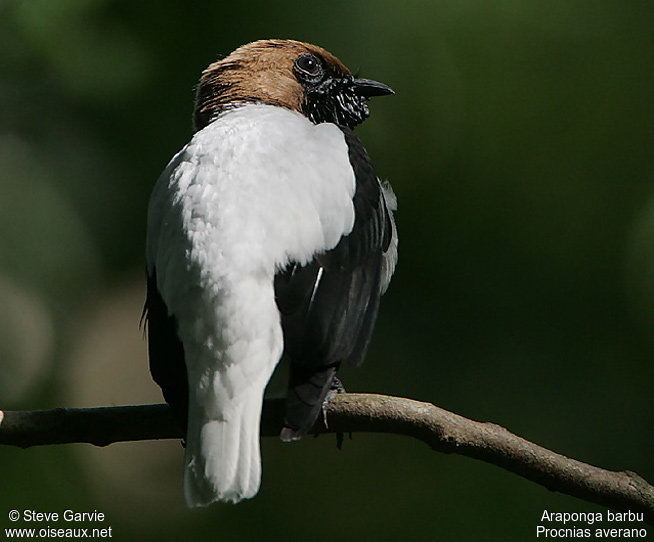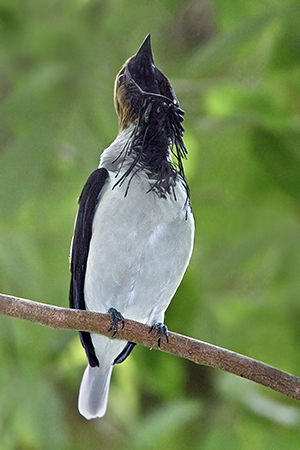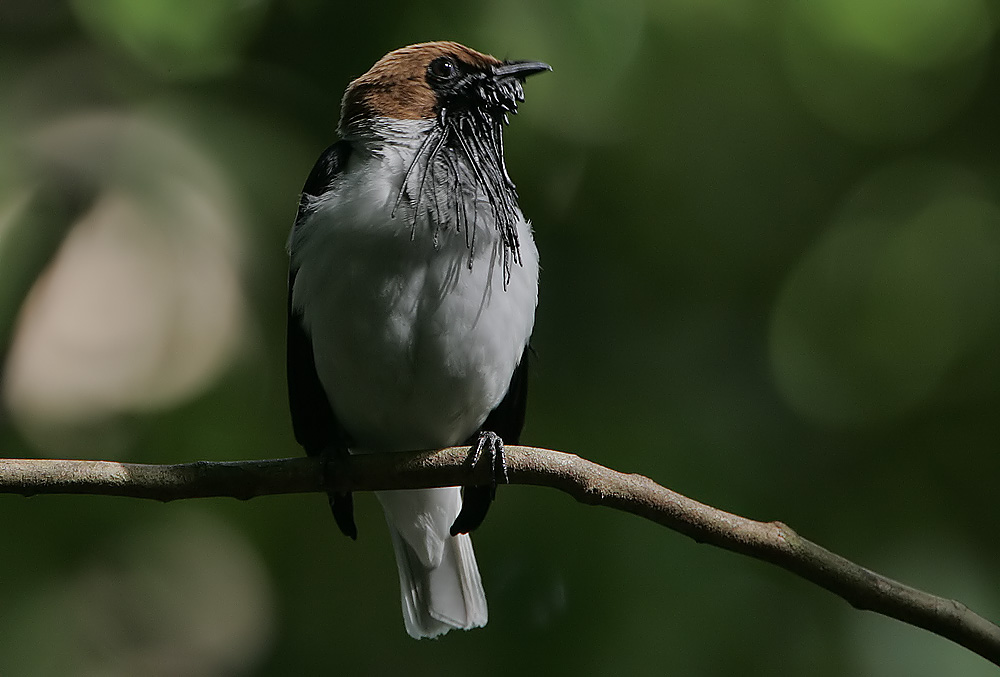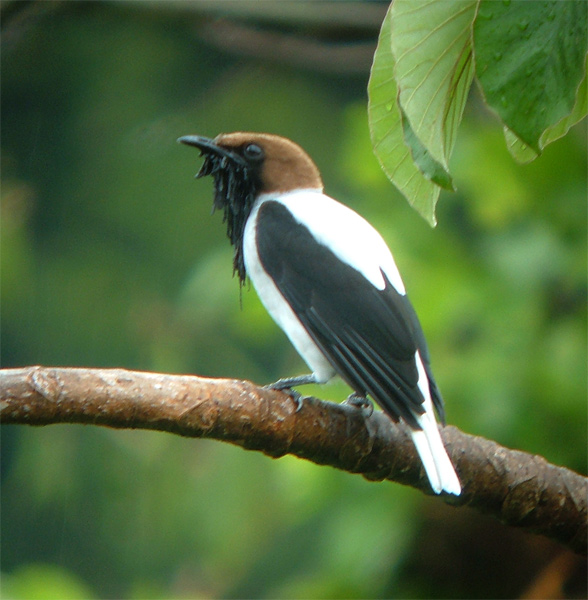
Procnias averano
TAXONOMY
Procnias averano Hermann, 1783.
OTHER COMMON NAMES
French: Araponga barbu; German: Flechtenglцckner; Spanish:
Campanero Herrero.
PHYSICAL CHARACTERISTICS
The bellbirds are distinguished by compact bodies, flat beaks,
short tarsi and a plumage of small feathers. Male bellbirds
have among the loudest calls of any birds. Males also differ
from the females in their plumage coloration. The male has a
bare throat with beard-like threads of skin set in bundles
around the skin of the throat. Its head is brown, and the
flight feathers and tail are black; the rest of the plumage is a
light pearl-gray. Females are predominantly green, and somewhat
smaller.
DISTRIBUTION
This species is patchily distributed in the north-central Amazon
and Guiana Shield, and is also found in northeastern
Brazil. Although primarily a lowland species, it may range up
to 6,200 ft (1,900 m).
HABITAT
Bellbirds live in tropical lowland or montane evergreen rainforest.
They prefer high perches in the canopy, often on bare
tree branches which project above the crowns of surrounding
trees.
BEHAVIOR
The far-reaching bell-like calls (often described as “bockk”) of
the males are characteristic of their jungle home. In display
this species opens up its gape like a frog’s mouth so that the
threads of the “beard” (which are comparable to a wreath of
tuning forks) reproduce its pure bell-like tones.
FEEDING ECOLOGY AND DIET
These birds feed on fruit. The short bills with a wide gape are
adaptations for gorging on quantities of fruit.
REPRODUCTIVE BIOLOGY
The nest is made of very little construction material, and is
built on open branches. One or two eggs are laid per clutch.
The female cares for the young alone, regurgitating fruit and
cleaning the nest of fecal sacks and regurgitated seeds. The
chicks leave the nest at 33 days, and take three years to come
into full color.
CONSERVATION STATUS
Not threatened.
SIGNIFICANCE TO HUMANS
None known.
Photo Gallery of - Bearded bellbird




 Animalia Life
Animalia Life